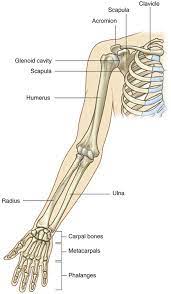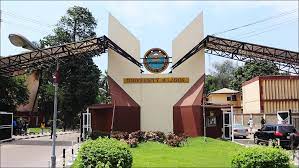
The upper limb is a complex structure that is essential for numerous daily activities. Bones and joints of the upper limb provide support, stability and movement of the arm, forearm, wrist, and hand. Understanding the anatomy of these structures is crucial for healthcare professionals, athletes, and anyone who wants to maintain a healthy upper limb.
In this article, we will delve into the bones and joints of the upper limb, their functions, and their common injuries.
The upper limb of the human body is an intricate and complex system that allows for a great degree of mobility and flexibility. It is composed of various bones that are essential for movement and protection. These bones include the scapula, clavicle, humerus, radius, ulna, carpals, metacarpals, and phalanges.
The scapula, also known as the shoulder blade, is a flat and triangular bone that is located on the posterior aspect of the thoracic cage. It serves as an attachment site for a number of muscles, including the deltoid, supraspinatus, infraspinatus, and teres minor. The scapula also helps support the shoulder joint by forming part of the glenoid fossa, which is the shallow socket that articulates with the humerus.
The clavicle, or collarbone, is a curved bone that runs horizontally between the sternum and the scapula. It serves as a strut that helps support the shoulder girdle and allows for a degree of flexibility and mobility. The clavicle is also an attachment site for several muscles, including the sternocleidomastoid, pectoralis major, and trapezius.
The humerus is the long bone of the upper arm that extends from the shoulder to the elbow. It is a major component of the shoulder joint and is responsible for a wide range of movements, including flexion, extension, abduction, and adduction. The humerus also serves as an attachment site for several muscles, including the deltoid, biceps brachii, triceps brachii, and brachialis.
The radius and ulna are the two bones of the forearm that run parallel to each other. The radius is the shorter of the two bones and is located on the lateral side of the forearm. The ulna is longer and is located on the medial side of the forearm. The radius is responsible for supination and the ulna is responsible for pronation of the forearm. Both bones are also important attachment sites for various muscles, including the brachioradialis and flexor carpi ulnaris.
The carpals are a group of eight small bones that make up the wrist joint. They are arranged in two rows of four and are responsible for a great deal of the flexibility and mobility of the hand. The carpals also serve as attachment sites for several muscles, including the flexor pollicis longus and the extensor carpi radialis longus.
The metacarpals are the five long bones that form the palm of the hand. They are numbered one through five, with the thumb being metacarpal one. The metacarpals serve as attachment sites for the muscles of the hand and are responsible for a wide range of movements and functions.
The phalanges are the 14 bones that make up the fingers and thumb. Each finger has three phalanges, while the thumb has two. The phalanges are responsible for a great deal of the movements of the hand, including gripping, grasping, and manipulating objects. They also serve as attachment sites for the muscles that control the fingers and thumb.
All of these bones are intricately connected and work together to provide the upper limb with a wide range of movements and functions. They also form several important joints, including the shoulder joint, elbow joint, wrist joint, and several joints in the hand.
The shoulder joint is a ball-and-socket joint that is formed by the articulation of the humerus and the glenoid fossa of the scapula. It is responsible for a wide range of movements, including flexion, extension, abduction, adduction, and rotation of the arm. The shoulder joint is also an important attachment site for several muscles, including the rotator cuff muscles and the deltoid.
The elbow joint is a hinge joint that is formed by the articulation of the humerus, radius, and ulna. It is responsible for flexion and extension of the forearm and is an important attachment site for several muscles, including the biceps brachii and triceps brachii.
The wrist joint is a complex joint that is formed by the articulation of the radius, ulna, and carpals. It is responsible for a great deal of the mobility and flexibility of the hand and is an important attachment site for several muscles, including the flexor digitorum profundus and the extensor carpi radialis brevis.
There are several types of injuries and conditions that commonly occur in the bones of the upper limb. these injuries may be as a result of trauma or overuse or aging, and they differ in severity. Some of these include:
1. Fractures: The bones of the upper limb, including the humerus, radius, and ulna, are susceptible to fractures due to trauma, falls, and accidents.
2. Dislocations: Dislocations, or when a joint in the upper limb is forced out of its normal position, can occur in the shoulder, elbow, or wrist.
3. Rotator cuff injuries: The rotator cuff is a group of muscles and tendons that connect the shoulder blade to the upper arm bone and help with arm movement. Injuries to the rotator cuff can occur due to overuse or trauma.
4. Tennis elbow: Tennis elbow is a condition that occurs when the tendons that connect the forearm muscles to the elbow become inflamed, causing pain and discomfort in the elbow and forearm.
5. Carpal tunnel syndrome: Carpal tunnel syndrome is a condition that occurs when the median nerve, which runs from the forearm to the hand, becomes compressed as it passes through the wrist. This can cause pain, weakness, and numbness in the hand and wrist.
6. Osteoarthritis: Osteoarthritis is a common type of arthritis that affects the joints in the upper limb, particularly in older adults. It occurs when the protective cartilage in the joints wears down over time, causing pain and stiffness.
7. Bursitis: Bursitis occurs when the bursae, small fluid-filled sacs that cushion the joints, become inflamed and painful. This can occur in the shoulder, elbow, or wrist.
8. Tendinitis: Tendinitis occurs when the tendons in the upper limb become inflamed or irritated due to overuse or trauma. This can cause pain and tenderness in the affected area.
In conclusion, understanding the bones and joints of the upper limb is essential in diagnosing and treating injuries or disorders of the arm, wrist, and hand. Knowledge of the anatomy of the upper limb can aid in identifying the structure of each bone and joint and their role in facilitating movement. By comprehending this complex network of bones and joints, healthcare professionals can make well-informed decisions to promote better patient outcomes.






















